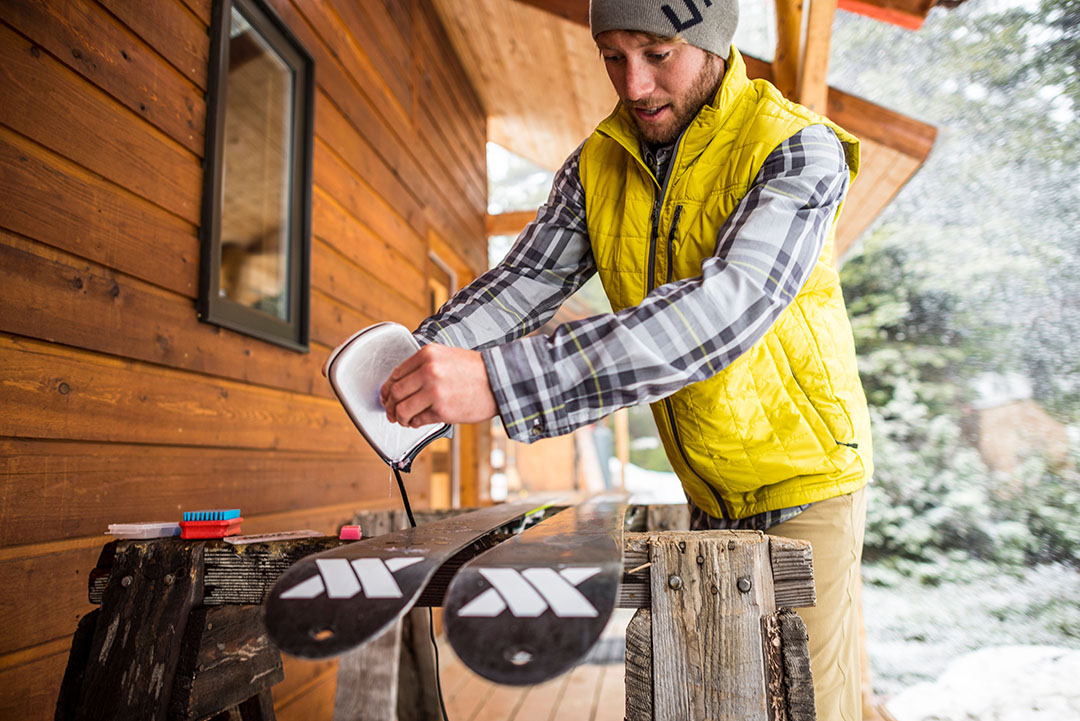With the development of synthetic materials that boast lighter weights, odor resistance, and moisture-wicking capabilities, cotton has been curb-stomped as a viable option for an active lifestyle. The phrase “cotton kills” is almost as trendy as #vanlife, but it might actually be an unwarranted blanket statement that causes us to second-guess its inclusion in our trip planning. Sure, synthetics are still king. They keep you dry and warm–a key factor when any hike turns into a survival situation. But, what if cotton still has a place in your gear closet?

1. Sweat and Temperature Management
We are all humans, and we all sweat. Living in the Northeast, we are graced with humid, sunny days, which contribute to frequent perspiration in even moderately active pursuits. That means sweat dripping off the tip of your nose and clammy creases behind the knees. Trying to wipe sweat off my face with a polyester shirt is like trying to mop up a drink spill with plastic wrap. Thus, for the built-in hand and face towel aspect, I prefer to wear a cotton shirt on a hot day at the crag or on a sunny, short hike. It may make my shirt a little heavier, but the sweat becomes a cooling agent on those dog days of summer.
Cotton does cool down your core temperature, especially when wet—perfect for a sweltering day. But, if you’re working up a sweat, and surrounding temperatures drop, a soggy shirt or pair of sweats will take your body heat down with it. If you’ll be doing moderate to high activity in temperatures below 55 degrees, synthetic or merino wool layers are important, as they do not absorb nearly as much moisture. When rain is in the forecast, hot or cold, opt for a water-resistant or waterproof shell instead of a hoodie. And, always think of the worst-case scenario. Even if it’s hot during the day, if a surprise storm rolls in, or if you end up stranded overnight, cotton certainly can kill.
2. Ease of Care
I like the care of my clothing to be as simple as possible. Cotton can be washed in water at any temperature and spin speed. You don’t have to worry about losing a few sizes in the drying stage, as most cotton is pre-shrunk these days. Likewise, you don’t need to worry about melting the material in the dryer.

3. Campfire Staple
We’ve all been there: hovering around a fire trying to stay warm on a cold night when you’re camping, or you’ve gotten a little too close trying to roast the perfect marshmallow or arrange the optimum log-stacking situation. Out of the belly of the fire, a tiny ember jumps and lands on your favorite puffy, melting a hole in the outer shell. I hope you brought your gear tape.
Next time, wear a flannel shirt. They don’t just look cool when you’re hanging around a fire. They’re also rather favorable when flames come into play. Their cotton cellulose composition withstands exposure to embers and higher heats, when compared to the thermoplastic materials making up your puffy or fleece shirt.
My insulated jackets (yes, I have a variety) keep me warm, happy, and playing outside through all four seasons. But, save those prized investments for when heat sources are not available, when you have to retain all of the remaining body heat you have left, or when weight is a factor, like when you’re summiting a 4,000-footer in late fall or when you’re sleeping in subzero temps. Car camping and bonfire building on a cool summer night? Play it safe with durability.
4. Budget-Friendly
Cotton is a great option for every budget. And, chances are you already have a few T-shirts lying around your room from giveaways at the last ski movie premier. Compared to the other activewear fibers, such as wool and polyester, cotton is the least likely to break the bank and most likely to leave you with an extra $5 or $10 to buy a pizza after your hike.

5. Post-Adventure Attire
I’m all about comfort at this stage in the adventure cycle. Maybe you went kayaking and took a spill, or kicked up a ton of mud biking through the forest after a rainstorm. Perhaps you’re like me and just sweat a lot when you ski. Nothing feels better than peeling off nasty technical clothes to throw on a dry pair of sweats, especially if you’re looking at a lengthy drive home.
For better or worse, no miracle material suits every adventure. As with any piece of gear, there’s a time and a place for cotton, and sometimes, it merely whittles down to personal preference. While it’s important not to forget the safety value of synthetics, it’s maybe time we remember cotton’s redeeming factors and how it can be a useful staple in everyone’s gear bin.
Glenn Swanson
Glenn got her literary debut writing weekly Taco Tuesday invitations to her pals while at UMaine. After a brief stint in writing memes for circulation among the office crowd, she decided to pursue the wilder frontier of outdoor blogs. She’s committed to the having the most fun on the mountain and sharing that stoke with others, including, but not limited to, summit high-fives.




